
I stayed in Şanlıurfa when I visited southeastern Turkey. Şanlıurfa, or in ancient times, Edessa, is a city in southeastern Turkey, and the capital of Şanlıurfa Province. The Holy Carp complex, locally known as the Balikligol, is the ritual and symbolic center of Urfa, a site of pilgrimage and healing that spans many centuries and faiths. The history of Şanlıurfa is recorded from the 4th century BC, but may date back at least to 9000 BC, when there is ample evidence for the surrounding sites at Duru, Harran and Nevali Cori. The city was one of several in the upper Euphrates-Tigris basin, the fertile crescent where agriculture began. According to Turkish Muslim traditions, Urfa (its name since Byzantine days) is the biblical city of Ur of the Chaldees, due to its proximity to the biblical village of Harran. However, based on historical and archaeological evidence, the city of Ur is today generally known to have been in southern Iraq, and the true birthplace of Abraham is still in question. Şanlıurfa is known as the city of prophets such as Jethro (Hz. Suayp), Job (Hz. Eyup), Elijah (Hz. Elyasa) and Abraham (Hz. Ibrahim) lived in this city, which in ancient times known as Edessa, and Moses (Hz. Musa) lived in the region for seven years working as a shepherd before returning to Egypt with his staff. It was in Sanliurfa that early Christians were first permitted to worship freely, and where the first churches were constructed openly. Pagan temples were converted to synagogues, synagogues to churches and churches to mosques, resulting in a uniquely eclectic architecture.


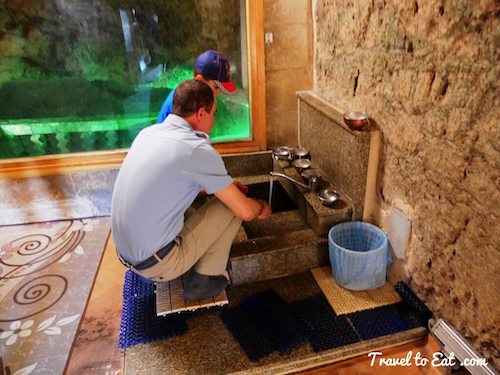
Next to Mevlid-i Halil Mosque there is the cave where it is believed Abraham was born. The most popular place for tourists in Sanliurfa is this cave, which is also called the Dervish Lodge. Close to the cave there is a small mosque with its prayer room, cell and a pool in front of it. The water in the cave is drunk by the local people and the visitors, as it is believed to possess healing properties. The legend tells that Nimrod, pagan king of Urfa, dreamt that a child born in his kingdom would bring an end to his rule. In a bloodthirsty move echoing Pharaoh and Herod, Nimrod king of Shinar, was, according to the Book of Genesis and Books of Chronicles, the son of Cush and great-grandson of Noah, ordered all male children born that year to be killed. Abraham’s mother hid in a cave to give birth to Abraham, who spent the first seven years of his life there. Abraham first appears in the Bible in Genesis 11:27, which says that Terah, a descendant of Noah's son Shem, begets three children: Abram, Nahor, and Haran. (Abraham is called Abram at the moment, which means “the father is exalted.” Not until he has a child of his own, decades later, will God change his name to Abraham, which means “father of many.”) The next verse suggests that Abraham's youngest brother, Haran, was born in a place called Ur of the Chaldeans, where he dies (though not before fathering a son, Lot). It does not say that Abraham was born in Ur. Muslim commentators (and increasingly some Jewish and Christians ones) propose a radically different alternative. The Genesis story says that after leaving Ur of the Chaldeans, Terah and his family settle alongside the town of Harran, where Terah lives for 60 more years.


Years later, Nimrod held a festival outside of Urfa, leaving the city unattended. With the city empty, Abraham descended on Nimrod’s idols and destroyed all but the largest one. Nimrod returned and became enraged when he saw the destroyed idols and asked Abraham who was responsible for the destruction. Abraham feigned ignorance and suggested that Nimrod pose the question to the largest statue, as it may have destroyed the others out of jealousy. Nimrod retorted that it was only a statue, and could do no such thing of its own power. Abraham replied: “You yourself have said it. If the statue is powerless over the other statues, what power can it have over you?”

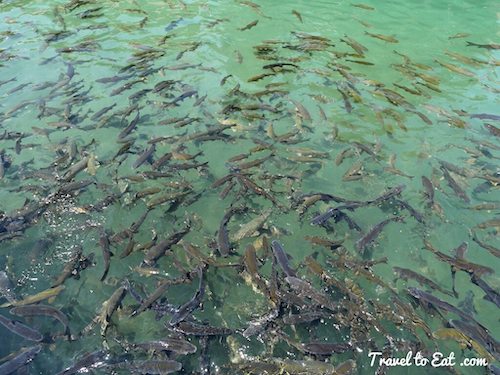

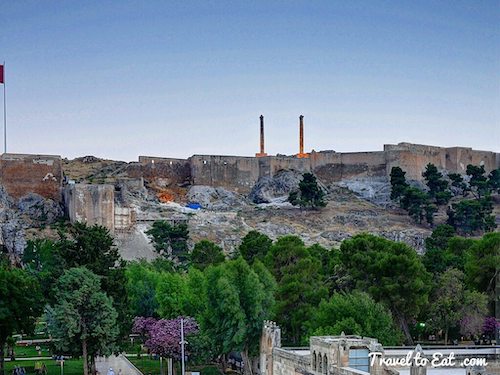
Infuriated, Nimrod prepared a great fire. He made a catapult of the castle’s twin pillars, and from there cast Abraham into the inferno. But God saved Abraham; where he landed, a spring gushed forth and the firewood was transformed into fish, the sacred carp that swim in the Pool of Abraham today. Fish Lake is surrounded by the Rizvaniye Mosque and Medresseh, Mevlid-i Halil Mosque and Halil-Ur Rahman Mosque. As a symbolic reminder of the event two large Greek pillars, seen above, were installed at the top of the hill.



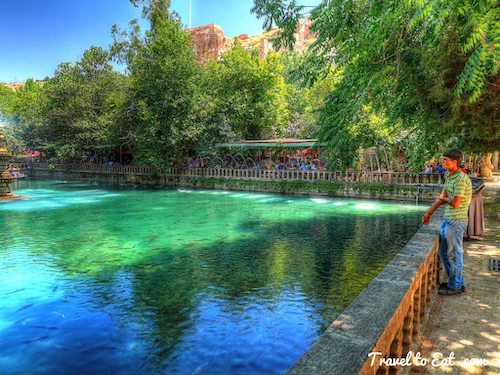
A spring, fed from by a tributary of the Euphrates, feeds the two lakes of the Balikligol. The first is the Halil-e Rahman Lake (Lake of Abraham). The second is the Ayn-i Zelda Lake, named after Nimrod’s daughter who, depending on the version of the story, either jumped after Abraham (and her fire too, turned into water), or whose tears over Abraham’s fate turned into the lake. The coals of the raging inferno turned to fish, and their descendants still swim lackadaisically through the pools enjoying their sacred status. Catching the fish is strictly forbidden, with dire warning that violators will go blind. Another myth associated with the lake says that if you glimpse the one and only white fish in the pools, your wish comes true. Surrounding the Ayn-i Zelda Lake are cafés, some of the most pleasant I have ever visited. The setting is serene, cool and strangely therapeutic.
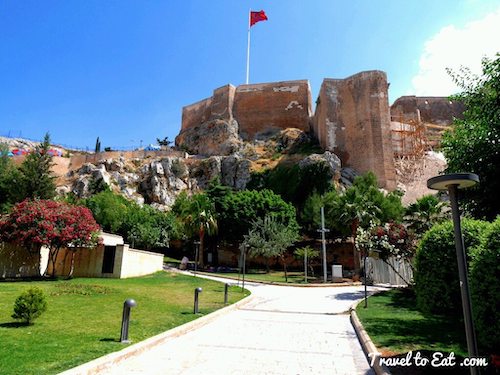
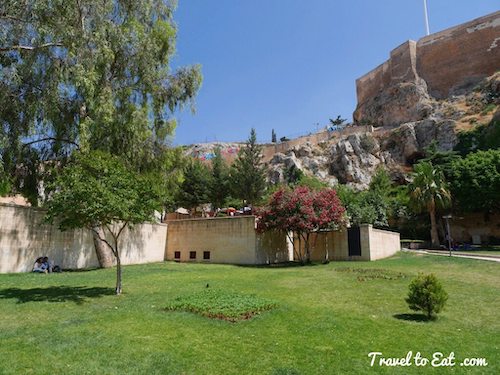

Sanliurfa Fortress is on the northern slope of Damlacik mountain to the south of the city. The citadel built by the Romans was later enlarged. The citadel has 25 watchtowers. It has remains from the Byzantine and Islamic times. The walls were built in 812 AD by the Christians to defend the city against Arab raids. The outer fortress was enlarged and restored by the Crusaders. The palaces of Molla, Gezer Pasha and Mehmet Pasha known to exist between the citadel and the outer fortress could not survive to our times.
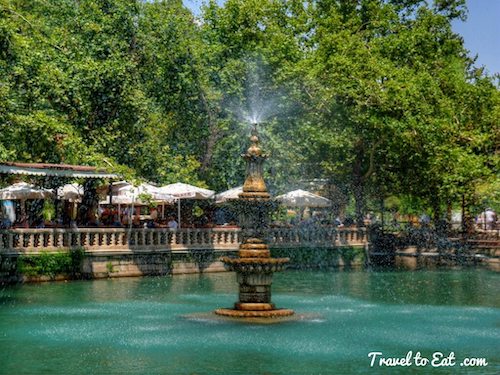
The story of the fish is a curious one. There is certainly nothing about sacred fish in the Quran or the Old Testament. These two pools have been around long before Islam and Christianity, and have pagan roots. Running water played an important role in near-eastern pagan cults. In this site, there was a temple to the goddess Atargatis, popularly described as the mermaid fish goddess. The temple included sacred fish that only the goddess’s priests were allowed to touch. One finds other examples of cults very much like this along the north-south trade route that Urfa has always been a part of, connecting Urfa to Diyarbakir and southern Mesopotamia. There are sacred fish also in Palmyra and Hierapolis, both of which lie along this caravan route, in present-day Syria. After Urfa became Christian and later Muslim, these old pagan practices likely continued alongside the new religious practices.
References:
Abraham Path: http://www.abrahampath.org/discover/places/urfa/sites/fish-lakes/
Slate: http://www.slate.com/articles/news_and_politics/explainer/2003/04/where_was_abraham_born.html
Controversial History: http://controversialhistory.blogspot.com/2009/04/origin-of-hungarians.html#.U8X0Rdq9KK0
Jewish Encyclopedia: http://www.jewishencyclopedia.com/articles/11548-nimrod
Mysterious World: http://www.mysteriousworld.com/Journal/2003/Autumn/Osiria/
Gail Allen: http://www.gailallen.com/rel/docs/evolution_of_god.html

